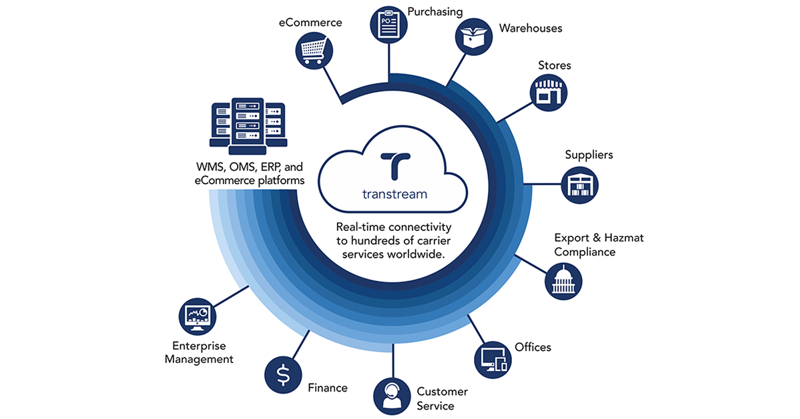Whether it is processing holiday returns, shipping to consumers taking advantage of post-holiday sales, or moving overstock items back to manufacturers, shippers are already starting to feel the impact of the various carriers’ 2019 general rate increases.
As we have discussed in a previous blog, the average rate increase for the two U.S. major carriers is set at 4.9 percent, two times the rate of inflation, making it more important than ever for shippers to make competition work for them by utilizing a multi-carrier shipping strategy. This will continue to be a factor if 2019 is anything like 2018, which saw steady growth in accessorial fees and surcharges. Managing transportation costs for your company is critical, whether doing it yourself or with the help of a third-party logistics (3PL) provider, especially with customer expectations for free and faster deliveries.
While you may be working hard to offset the rate hike—maybe even using some of the mitigation strategies here—staying on top of transportation spend can be difficult without the help of the right parcel shipping system.
“It is difficult to find the most cost-effective way to ship a package, as today’s shipping prices can be different than yesterday,” says Mike Graves, Pierbridge’s director of product management. “The right software, like Transtream, means that shippers don’t have to be shipping experts to be successful, and if they are, it makes their job even easier.”
Here are some of the ways shippers can manage the price increase, and how Transtream Parcel TMS can go beyond multi-carrier shipping software and make the job a bit easier:
Strategy: Compare rates of multiple carriers to be sure you are getting the best rate available, as well as using the correct shipping method and carrier.
Transtream Delivers: Transtream Parcel TMS Route apps and APIs instantly determine the most transportation cost-effective way to pack SKUs and rate shops the result in real time. This allows shippers to compare multiple parcel carriers’ rates in a single parcel shipping platform and make decisions based on business rules that are set by the company. Also, the rate shopping capabilities can be utilized to see if there is a better option for shipping using regional or local carriers to handle last-mile, white-glove, and other in-demand services.
Strategy: Invoice auditing and benchmarking.
The need to audit invoices isn’t a novel idea for most small parcel shippers. Carriers have been known to overbill for shipments by incorrectly applying rates, not crediting for shipments when they miss a service guarantee, or charging residential rates for commercial deliveries. Digging deeper into analytics can help businesses benchmark the most—and least— cost-effective ways to keep shipping spend under budget.
Transtream Delivers: Transtream analytics provide the tools to manage enterprise shipping processes and costs by capturing data at all points of shipping that an enterprise-class shipping system can control, including fulfillment centers, drop-ship suppliers, stores, offices, mail centers, and returns.
Strategy: Avoid unexpected and unnecessary surcharges and accessorial fees such as residential address, fuel surcharges, and dimensional rating fees.
There are more than 100 potential fees and surcharges in most small parcel service agreements, and carriers don’t necessarily wait for an annual increase announcement to change them.
Transtream Delivers: Smart carton selection through Transtream’s Opdimizer cartonization algorithms ensures shipments won't be hit with DIM rating unnecessarily. Opdimizer will also help accurately determine new space-based rating many LTL carriers are introducing. Nervous about how many truckload containers you will need? Opdimizer instantly determines how many containers will be required to carry loads.
Strategy: It isn’t just outgoing shipments that can push your transportation spend over the line. Returns and other inbound shipments can take a chunk out of shipping budgets.
Transtream Delivers: Many companies focus on getting the best rates for their outbound shipments, missing out on low hanging fruit opportunities to offset carrier increases. The Transtream Return Widget allows customers to self-service return products while the business controls the method of inbound delivery based on rules entered into Transtream Parcel TMS.
Strategy: Negotiate rates with carriers.
Not every business is large enough to get the negotiated rates the big boys do. However, doing it by yourself or working with a 3PL partner to benchmark industry rates can help you get the best deal available.
Transtream Delivers: From carrier rates, DIM fees, in-depth analytics, and more, Transtream gives shippers the business intelligence that helps them enter into negotiations on an equal footing with carriers, at the least, giving them the best chance of securing rates that keep them ahead of the competition. But even if you manage to negotiate, it will be all for naught if you don’t apply and manage them correctly.
There is no way around the costs of shipping, especially as more customers expect fast and free delivery. However, going beyond guesswork and rules of thumb, and using a multi-carrier strategy and parcel shipping system to manage it, gives shippers a much better chance of keeping more money in their own pockets.
